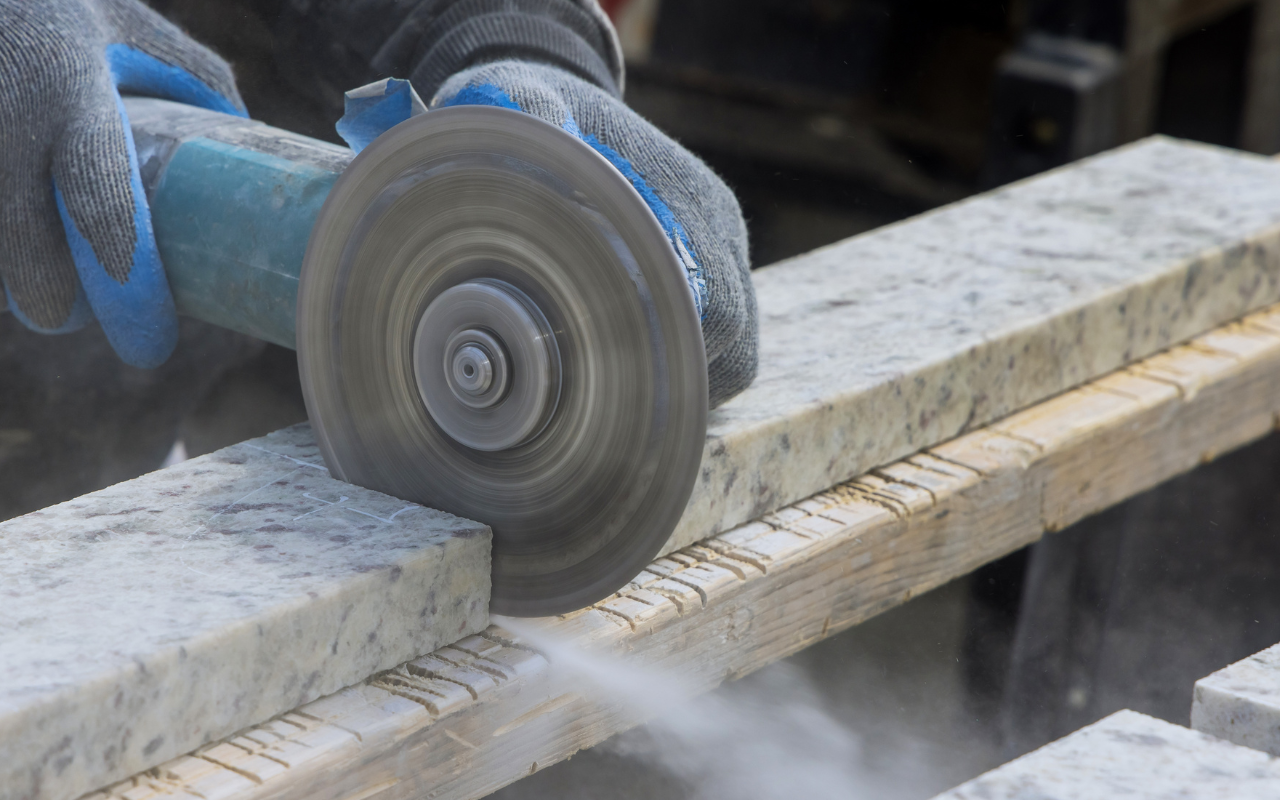After years of rising numbers of silicosis cases, a federal government taskforce, and tireless calls for action, a national registry has been launched for occupational respiratory diseases.
It took years before there was any awareness of how deadly breathing in the dust while dry-cutting artificial stone was, and years more for governments to act despite calls from doctors, disease experts and unions.
It’s almost a decade since the first detection of the deadly silicosis disease in Australia. After years of calls for action, the federal government has launched the National Occupation Respiratory Disease Registry (NORDR).
It is now mandatory for occupational and environmental medicine physicians, and respiratory and sleep medicine physicians to report prescribed occupational respiratory diseases like silicosis to NORDR.
NORDR was one of the recommendations of the National Dust Disease Taskforce final report that was released in 2021.
Artificial stone, with brand names like Caesarstone, became the “it” feature in kitchen and bathroom renovations after being introduced to Australia in the early 2000s. At the time, tradespeople cutting the product to size for use in home builds and renovations, were unaware they were breathing in potentially deadly silica dust.

The first Australian case of severe, progressive silicosis was detected in a male fabrication worker in 2015. It was caused by repeatedly breathing in silica dust after dry-cutting artificial stone for benchtops. In the patient’s workplace, there were high levels of visible dust and he was only provided with a disposable paper mask.
Cases of silicosis overseas had already been reported but important opportunities to protect Australian workers were missed.
Silicosis refers to a spectrum of progressive and debilitating occupational lung diseases caused by the inhalation of free crystalline silica. There is no effective treatment for the disease.
Symptoms for silicosis can go unnoticed until there is breathlessness on exercise, and a dry cough that progresses gradually.
By 2018, approximately 35% of workers screened in Queensland were found to have accelerated silicosis and a high rate of progressive massive fibrosis with a grim prognosis – permanent disability or death. Queensland acted quickly and banned dry-cutting of engineered stone that same year.
Cases continued to rise nationwide, with more than 450 workers diagnosed with silicosis by mid-2021 – almost a quarter of all screened workers. In 2023, it was reported that there were about 700 accepted claims for workers’ compensation for the disease. However, workers’ compensation figures are known to be an under-representation of actual cases. Recently it’s been reported that one in four stonemasons in some states who work with engineered stone have been diagnosed with the respiratory disease.
Prior to the introduction of NORDR, clinicians at the frontline didn’t have any proper channels to communicate their concerns to regulators, leaving policy makers without vital insights.
Clinicians Dr Hoy, a respiratory and sleep physician, and Professor Brims, a consultant respiratory physician, raised their concerns about silicosis in the MJA in 2017, calling on employers, governments and health care providers to ensure the highest possible standards are in place to protect workers’ respiratory health.
In response to widespread concerns, the government formed the National Dust Disease Taskforce in 2019, four years after the first case was discovered. Its report was released in 2021, disappointing many workers over its failure to ban the use of the product nationwide.
Finally, an Australia-wide comprehensive ban on stone-cutting has been introduced – including manufacture, supply and processing from 1 July 2024, six years after Queensland led the way.
Recently Dr Hoy and Professor Brims criticised regulators in being slow to protect thousands of workers.
“The failure of WHS [Work Health and Safety] regulators to act more quickly will have undoubtedly contributed to thousands of benchtop workers being subjected to highly hazardous work environments for longer than necessary and added to the burden of disease Australia is facing today.”
The pair have been advocating for the occupational respiratory disease registry to provide insights into the causes and trends of the disease and to allow early identification of new exposures or industries of concern.
“It is hoped that clinicians have a genuine interactive relationship with the registry, and that witnessing timely responsiveness of regulators to the findings from the registry will be a strong incentive to support ongoing reporting of cases.”
The government said NORDR aims to capture and share data on workplace exposures and the incidence of occupational respiratory diseases. Among the goals of the registry are to detect new and emerging threats to workers; and provide targeted intervention; and plan, deliver and promote health care and related services for occupational respiratory disease.
Subscribe to the free InSight+ weekly newsletter here. It is available to all readers, not just registered medical practitioners.

 more_vert
more_vert
Text books with chapters on the pneumoconioses have been in print for over twenty years at least. Silicosis and asbestosis were part of medical student lectures in Western Australia during the 1970s.
Translating knowledge into appropriate action also seems to take many decades, particularly when public health policy is required.
Medical organisations have an important role in continuing to remind policy makers of the lessons of public health management, especially when they seem to have been forgotten.